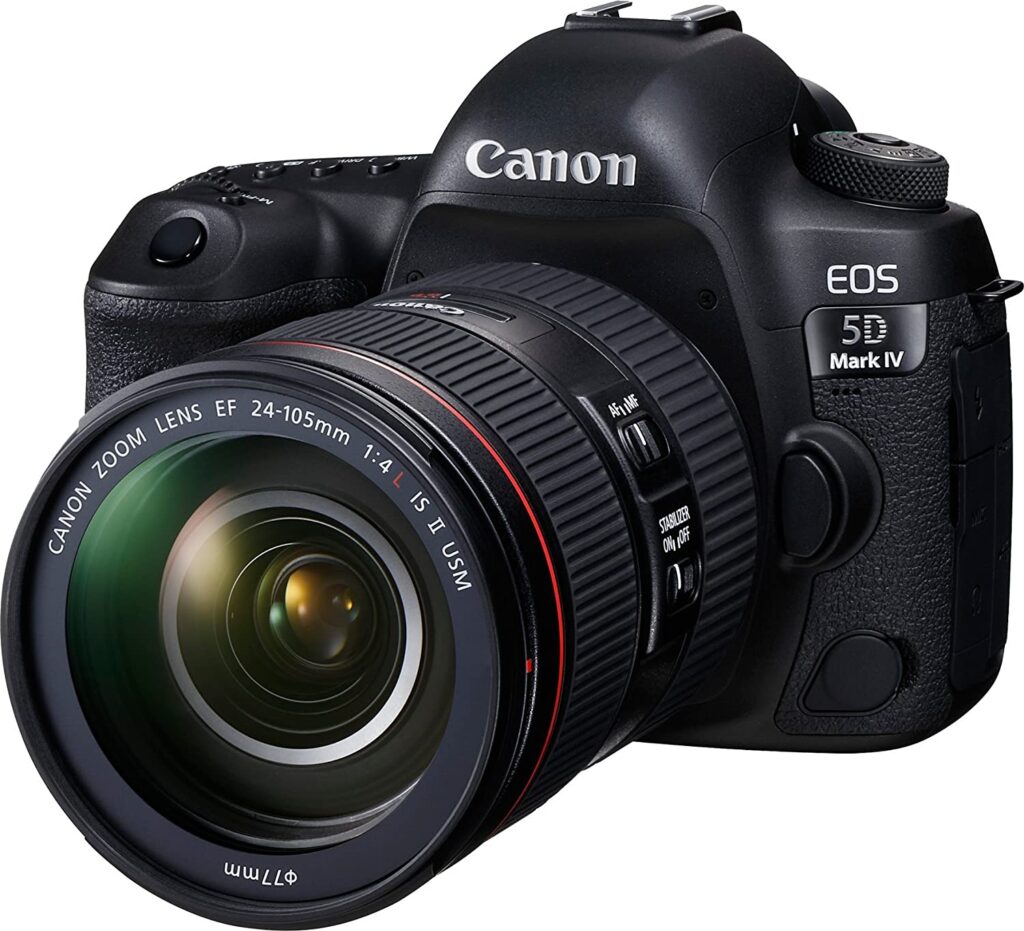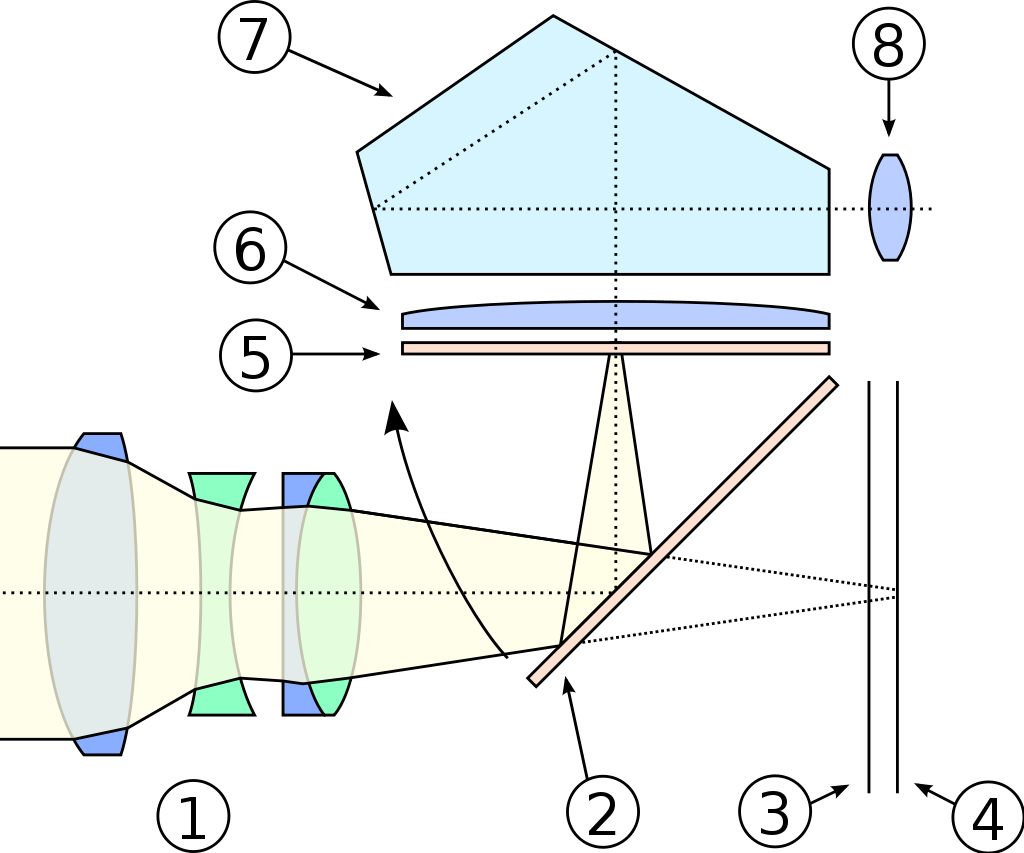Many people own DSLR cameras and use them every day, but not many know what DSLR really means or their many features. In this article, we explore the meaning, history, and common features of DSLR cameras.

What does DSLR stand for?
DSLR stands for Digital Single-Lens Reflex. Though this word salad sounds complex, it’s actually quite simple.
The digital aspect of DSLR refers to the digital camera sensor that DSLRs use. The distinction is necessary because for a long period of time, 35mm film was used with SLR camera systems as the primary image capturing method. Only a few film SLRs are still in production today. 35mm (full frame) digital sensors have firmly taken their place.
The single-lens reflex portion of DSLR refers to a system devised to show a photographer the same image that will be captured by the camera using a single lens. This is achieved by using a mirror to block the camera sensor and reflect the scene visible through the lens into the camera’s viewfinder. When taking a picture, this mirror flips up, exposing the sensor to the scene visible through the lens for a specific period of time called shutter speed.
How a DSLR Works
Check out the following diagram from Wikipedia (CC BY-SA 3.0)

The light enters through ① the lens and bounces off ② the reflex mirror. The light then travels through ⑤ the matte focusing screen, ⑥ condenser lens, ⑦ pentaprism, and finally to your eye through the ⑧ viewfinder eyepiece. When you take a picture, ② the reflex mirror flips up, ③ the shutter raises and exposes ④ the digital sensor to light.
While taking a picture, the viewfinder is blocked. The classic clicking sound that everyone knows is the sound of the reflex mirror mechanism moving, not the shutter. This is why mirrorless cameras are much quieter.
Before SLR: Twin-Lens Reflex (TLR)
Prior to the invention of SLR technology, all cameras had two lenses. One of the lenses led to the film, and the other to a viewfinder. If the viewfinder was above the primary lens, this was called a twin-lens reflex system. If it was to the side, it was called a rangefinder camera. There were problems with having twin lenses. One did not always accurately reflect what the other saw. To combat this, the viewfinder lens was set to intersect with what the film lens would see at a fixed point in front of the camera. This did not fix framing issues in close-up shots resulting from parallax (difference in apparent position of an object viewed from two lines of sight). This is because nearby objects are affected more by parallax than farther objects. The principle behind this can be plainly seen when driving in a car. The road appears to whiz by, but farther off objects appear to move slowly.
Common Features of DSLR Cameras
Phase-Detection Autofocus
Most DSLRs use phase-change detection autofocus. This type of autofocus is based on a mathematical calculation based on the difference between pairs of images. Focus is checked in the autofocus sensor. To learn more, read here (phase detection autofocus). This form of autofocus is based on sensor quality and computer processing power, which are both currently high, and rapidly increasing. The result is modern DSLRs have incredibly fast and accurate autofocus.
Interchangeable Lenses
This is a key feature of DSLR cameras that make them a cut above point and shoot cameras. The ability to put specialized lenses on your camera allows greater quality. A point and shoot is a jack of all trades, master of none. A DSLR gets to be a jack of all trades, master of all because of interchangeable lenses. Fixed focal length or prime lenses are the key to getting the highest quality. They are made for a very specific purpose, and because of this, don’t make compromises on image quality.
Another benefit to interchangeable lenses is reducing the need to purchase new equipment. Lenses can last decades and still be high quality and perfectly useful. Camera bodies regularly update. If you buy a camera with the same lens mount, you don’t need to spend money on new lenses. The resale value for camera lenses is also quite good, so if you no longer need a certain lens, you can often get a good portion of your money back. If you want to learn more about lenses, check out my article on focal length, perspective, and lenses.
Large Sensor Sizes
DSLR cameras almost entirely have one of two sensor sizes: APS-C (~22x15mm) or full frame(36x24mm). Smartphones and point and shoot cameras have very small sensors (some as small as 5.76×4.29mm). Some mirrorless cameras also have smaller micro four thirds sensors. Sensor size affects a number of things in photography, including how focal lengths are read on lenses, amount of depth of field from the same apertures, and amount of noise from the same ISO settings. To learn more about how these aspects of photography are affected, read my article on sensor sizes.

More Depth of Field Control
Because DSLRs have large sensor sizes, they have more control over depth of field. They are better at achieving shallow depth of field. This is often done through the use of a fast (wide aperture) prime lens. Smaller sensors can more easily achieve wide depths of field, but this is trivial because adequately wide depth of field can still be achieved with larger sensors. My article of sensor sizes covers this topic in more detail.
Long Battery Life
DSLRs are often quite large because of the mirror mechanism that must be placed between the sensor and the lens mount. This leaves a lot of room in the body for batteries. So, naturally DSLRs are known for having long battery lives.
Many Accessories
DSLR cameras have many supporting accessories and equipment. They are threaded on the bottom of the body to be attached to monopods, tripods, gimbals, or rails. Many DSLRs have audio jacks so external microphones can be used while recording video to improve quality. DSLRs have what is called a hot shoe (the metal prongs on top) for the attachment of various items such as speedlights, shotgun mics, wireless triggers, and much more. The many accessories DSLRs can have extend their usability and effectiveness.
Conclusion
DSLRs are very capable cameras that have a proven track record and an established line of excellent lenses. They have tremendous battery life and rugged, dependable design. Their autofocus may be lacking compared to mirrorless, and they are less suited to video work. Mirrorless may be the future, but DSLRs still have a lot to offer now. It depends on the needs of the user.
